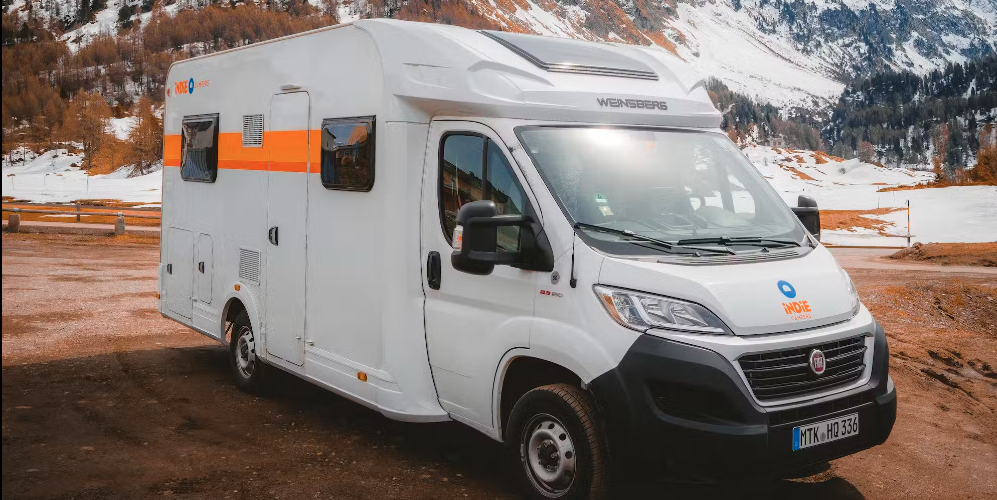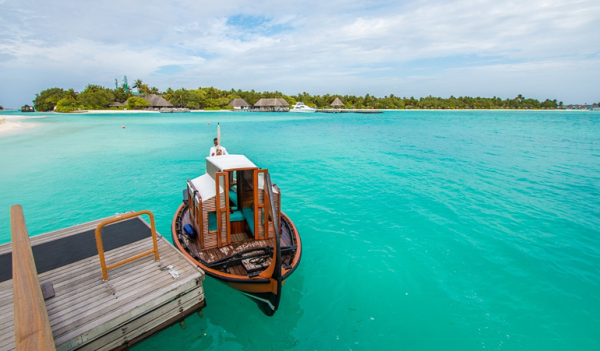Iceland Travel Guide – What to see and do in 8 days

A complete Iceland 8-day travel guide with all the information you need regarding hotels, camping sites, restaurants and transportation. We’ve also included a full itinerary with everything you should see and do in Iceland in 1 week.
Once shrouded in extreme mysticism, enchanting Iceland has definitively emerged as a popular tourist destination. After all, despite the prohibitive prices and harsh weather conditions, it’s hard to find another country with such vast and awe-inspiring natural wealth, especially considering its small size.
Home to monumental waterfalls and bubbling geysers, the Land of Fire and Ice is a fascinating destination that grabs you by the collar and stays with you long after you’ve left. It’s remote, it’s secluded, and it’s expensive – true. But it’s also an unparalleled destination in the European continent, whose natural magnificence can only be compared to places you’ll find on the other side of the world.
So, if you’re planning a trip to this stunning destination, our ultimate Iceland 8-day travel guide is here to help. In addition to practical information about hotels, camping sites, restaurants, and transportation, we’ve also put together a comprehensive itinerary with all the places you must see and visit in Iceland in 1 week.
Iceland 8-Day Travel Guide – Best time to visit the country
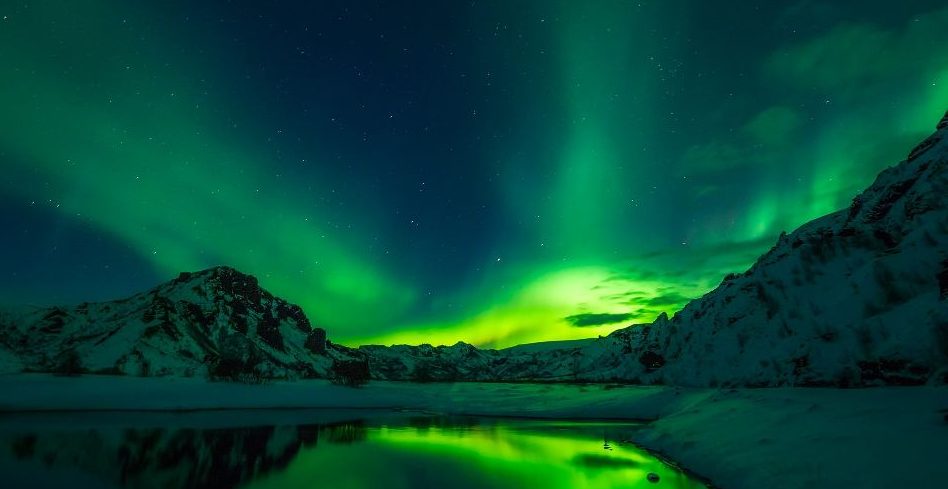
Although the answer may seem obvious, the best time to visit Iceland will always depend on your objectives and preferences.
For example, if you want to explore the country from end to end and discover its main natural attractions (which is what our guide focuses on), then you’ll definitely want to avoid the harsh winter months and schedule your visit for the summer (June to September). During this time, you can expect more agreeable temperatures and favorable conditions, while the chances of encountering restricted areas on the island are virtually non-existent. Moreover, the summer months offer the enchanting spectacle of the “Midnight Sun”, where the Icelandic latitudes are never fully enveloped in darkness.
Conversely, if your main quest is to witness the awe-inspiring phenomenon of the Northern Lights, then summer should be avoided at all costs due to the heightened solar exposure mentioned earlier. In this case, it is highly recommended to schedule your Iceland adventure between the months of October and March.
Iceland 8-Day Travel Guide – Documents needed for your trip

Since Iceland is part of the European Free Trade Association and Schengen Area, EU citizens only need to show a valid ID Card in order to be granted access to the country. If you are a citizen of a country that doesn’t belong to any of the two you will need a passport or even a visa in order to visit Iceland.
Iceland 8-Day Travel Guide – Withdrawals, banking fees and travel budget
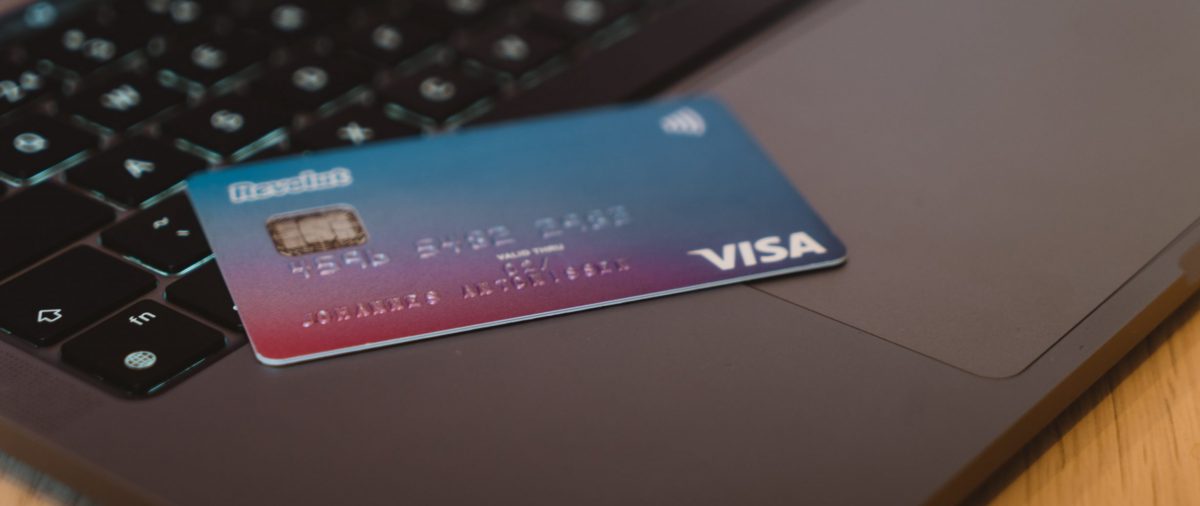
With the Icelandic Króna (kr) as Iceland’s official currency, any withdrawal using an Irish bank card might incur in the payment of several different fees. Besides the percentual fee referring to the currency conversion, some Irish banks may also charge a flat commission for withdrawals made outside of Ireland. In some instances, you may well end up paying 5%-6% of your original withdrawal in banking fees.
On the other hand, exchanging money before your trip is not a viable solution either. Besides not being any cheaper, it’s also not safe or wise to carry so much money on you during your trip. As such, we recommend using the services of online banking fintech companies such as Revolut, N26 or Monzo.
By using the bank’s online app, you will have immediate access to your balance, as well as all your expenses, allowing you to check in real time whether you’ve been charged any fees for your withdrawals or not. Besides, you may just load your card with the exact daily amount you want to spend on your trip, helping you to avoid overspending and going over your budget. Plus, if you find yourself in a situation where your card got lost or stolen, the only money you stand to lose is amount you had loaded your card with. Sign up for Revolut for free >> to get 3 months of Premium.
Iceland 8-Day Travel Guide – Safety, scams and frauds

According to the Global Peace Index, Iceland is actually the safest country in the world!
This means that you will have little to worry about in terms of human-related dangers, as the likelihood of theft, kidnapping, scams or altercations is extremely low, although, of course, it is always recommended to use common sense. As the rankings show, you’d be hard-pressed to find a safer destination for your travels.
That being said, Iceland’s mesmerizing natural wonders come with a few guidelines that should be observed. After all, this is a land of remote wilderness and raw beauty, so you don’t want to find yourself caught in a storm or stranded in the middle of nowhere due to poor weather conditions. Therefore, and before setting off towards the unknown, we highly recommend checking weather forecasts and any potential alerts regarding avalanches, snowstorms or volcanic eruptions. You can easily do so by visiting the website safetravel.is or by using their official app.
Furthermore, since renting a car is almost a prerequisite for exploring the country freely, you should pay equal attention to the road. Slippery surfaces due to ice accumulation or encounters with sheep herds on the road are extremely common. Lastly, it’s important to mention that strong currents, slippery cliffs or unstable terrain can result in highly distressing situations and lead to disaster, so always make sure to respect any signage indicating restricted areas and avoid venturing into off-limits zones.
Where to sleep in Iceland – Hotels and Campsites

Hotels, hostels and apartments
To the surprise of absolutely no one, this small cluster of the idyllic Nordic Model, like the other countries that fall within the same category, is extremely expensive. From transportation to restaurants, tours, supermarkets and even museums, keeping it budget-friendly is an impossible task when visiting Iceland. Needless to say, accommodation is no exception, with hotel prices easily going over 150,00€ per night.
Nevertheless, we have tried to provide a few interesting accommodation options for each of the main cities on the island:
Iceland 8-Day Travel Guide – Hotels in Reykjavik
- € – Hótel Heiðmörk
- €€ – Reykjavik Marina
- €€€ – Radisson Blu 1919 Hotel
Iceland 8-Day Travel Guide – Hotels in Isafjordur
- € – Isafjordur Hostel
- €€ – Hotel Isafjördur – Torg
- €€€ – Solbakki
Iceland 8-Day Travel Guide – Hotels in Vik
- € – The Barn
- €€ – Puffin Hotel Vík
- €€€ – Black Beach Suites
Iceland 8-Day Travel Guide – Hotels in Hofn
- € – Höfn Cottages
- €€ – Árnanes Country Hotel
- €€€ – Vikingcafe
Iceland 8-Day Travel Guide – Hotels in Akureyri
- € – Hafnarstræti Hostel
- €€ – Centrum Hotel
- €€€ – Hafdals Hotel
Campsites in Iceland

While many travelers choose to rent a camper van and embrace the camping experience during their time in Iceland, the truth is that you can’t simply park anywhere and set up camp at will. According to Icelandic law, camper vans must be parked in authorized campsites or with the explicit consent of private landowners. The same rules apply to pitching tents, although campers may be permitted to set up on uncultivated land if the owner doesn’t object. However, this is only allowed when there is no designated campsite available nearby, and the stay should not exceed one night.
The good news is that Iceland is blessed with an abundance of campsites scattered across the country. While each campsite may have its own unique features, they generally offer similar amenities. In addition to private toilets, you can expect shared areas, a kitchen, a laundry with washing machines and barbecue pits. Some campsites even provide access to electricity, allowing you to charge your devices.
Prices for campsites typically range between 1500 and 2500 kr (10,00€-16,50€) per person, per night. However, it’s important to note that this base fare doesn’t usually include access to showers and electricity, which may require an additional fee. Finally, if you prefer not to bring your own camping equipment, you’ll find several rental options in Reykjavik.
Iceland 8-Day Travel Guide – Transportation between the Keflavik Airport and the center of Reykjavik
- FlyBus
- Duration: 45 minutes
- Frequency: Every 30 minutes to 2 hours, operating between 03h30 and 21h30
- Price: 3699 kr (24,50€) one-way, or 6899 kr (45,50€) return
- Destination: BSÍ Bus Terminal
- Public Bus #55
- Duração: 60 a 90 minutos
- Frequency: Every 30 to 60 minutes, operating between 06h35 and 22h55
- Price: 1920 kr (12,70€)
- Destination: BSÍ Bus Terminal
Iceland 8-Day Travel Guide – Transportation and how to move around
When it comes to transportation, let’s not beat around the bush. While it is indeed possible to visit Iceland without renting a car/camper van and still travel along the legendary Ring Road, where you’ll find the country’s main natural attractions, this will be one challenging and expensive mission. While there are frequent buses connecting major urban centers in Iceland, the same cannot be said for the nation’s waterfalls, glaciers, hot springs or national parks. For those, and without a car, you will inevitably need to rely on private or group tours, which, like everything else in Iceland, can quickly drain your budget.
Buses in Iceland
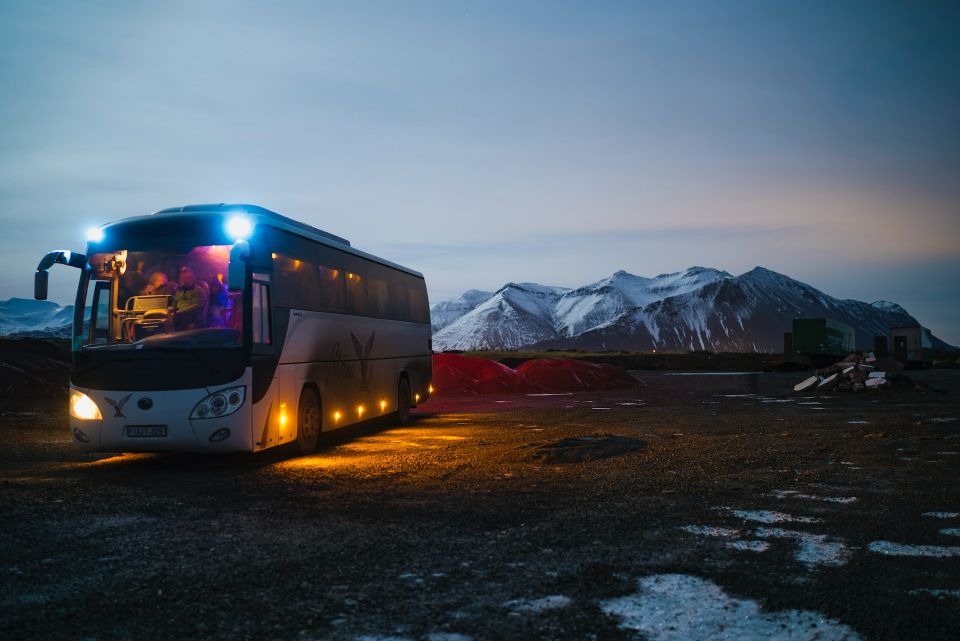
As mentioned, you can always try using Icelandic buses to hop between the country’s main urban centers. Renowned for their yellow color, Straetó buses are clean, well-organized and punctual, as one would expect when traveling a Nordic country. In addition to covering various sections of the Ring Road, these buses also operate in the East Fjords and West Fjords. You can check routes, prices, and schedules on the company’s official website.
On the other hand, during the summer months, local company Highland Bus offers daily departures from Reykjavik, taking you to the nature reserves (and hikers’ paradise) of Landmannalaugar and Þórsmörk. However, this is pretty much the full extent of what you can explore without renting a car or taking private tours.
Private Tours in Iceland

Knowing all too well that it’s nearly impossible to reach most of Iceland’s popular destinations independently, the private tour industry has flourished in the Land of Fire and Ice, offering daily or multi-day guided visits to the most sought-after regions.
With that in mind, if you’re planning a trip to Iceland but want to avoid renting a car altogether, we’ve compiled some intriguing options below that will help you explore the majority of the locations we’ll mention in our Iceland 8-day travel guide:
- Blue Lagoon + Golden Circle: Thingvellir, Geysir Hot Spring, Gullfoss and Kerid
- South Coast Excursion: Seljalandsfoss, Skógafoss, Eyjafjallajökull and Sólheimajökull
- Whale-Watching Tour in Husavik
- Lake Myvatn and Godafoss Waterfall from Akureyri
- Ice Cave Tour in the Vatnajökull National Park
- Vatnajokull Glacier Hike From Skaftafell
Renting a car or campervan in Iceland
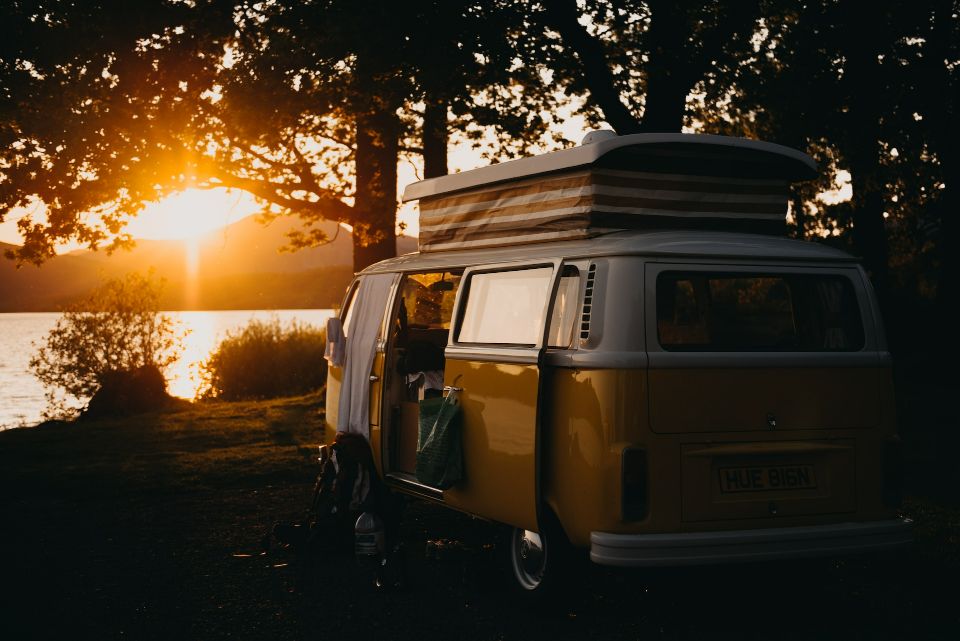
Lastly, when it comes to having the freedom and flexibility to explore, nothing beats renting a car in Iceland. I would even go so far as to say that driving your own vehicle along the often-empty roads of the country, taking in the breathtaking scenery and making spontaneous stops, is an essential part of the whole experience of traveling through the Land of Fire and Ice.
But let’s not forget, driving in this remote island nation does require some special precautions. First and foremost, it’s important to note that even though the main highway, known as the Ring Road, is fully paved along its staggering 1300+ km, it’s quite common having to venture onto gravel side roads. While you don’t necessarily need a 4×4 vehicle for these roads, you do need to be mindful and extra cautious with your speed to avoid losing control of the car. On the other hand, if you’re up for the adventure of exploring the mountainous Highlands and tackling the so-called F-Roads, which are only open during the summer months, having a 4-wheel drive vehicle is pretty much mandatory.
As we mentioned earlier in the safety section, Icelandic weather can be unpredictable and change rapidly. Therefore, before setting off, it’s crucial to stay updated on the weather conditions and any potential alerts regarding avalanches, snowstorms or volcanic activity. You can easily check the weather and alerts by visiting the safetravel.is website or by using their official app. Additionally, keep in mind that you may find yourself driving for long stretches without encountering any signs of civilization, so it’s definitely wise to make sure you have enough gas in the tank to avoid getting stranded in the middle of nowhere.
Regarding your car rental, you can browse for prices and availability on Rentalcars.com!
On the other hand, if you’re looking out for a campervan, we’ll share 4 different local companies, so that you can make a decision based on your budget and on the number of people you’re traveling with:
- Cheapcampervans – A commercial van converted into a mini-campervan, this is the ideal choice for those seeking the most affordable option for only 2 people. They also offer a 4×4 with a rooftop tent, but be mindful of the nighttime temperatures during your travel dates or bring well-insulated sleeping bags.
- Happycampers – They offer various options ranging from compact to more spacious, with a reasonable price range and capable of accommodating up to 5 people. When we were in Iceland, we rented a Happy 1 EX and absolutely loved it.
- Indicampers – Standard campervans, but with highly competitive prices and able to accommodate up to 5 people. Except for the Sporty model, they are equipped with a bathroom that includes a shower and a toilet.
What to eat in Iceland – Local staples and culinary delights

As expected from such an isolated and inhospitable environment, where producing anything due to the extreme weather conditions can be a true challenge, Icelandic cuisine is not exactly famous. However, that doesn’t mean there aren’t a few delicacies worth trying!
While fish takes center stage in Icelandic gastronomy, whether it’s fresh or cured, there’s one meat dish that stands out: Roast Lamb – with more sheep than people in Iceland, it’s no wonder that the meat of these animals is highly cherished and consumed throughout the country. If you’re looking for something lighter, you can indulge in Kjötsúpa, a flavorful lamb and vegetable soup. Continuing on the realm of Icelandic meats, and for a glimpse into the many peculiar elements of this nation’s gastronomy, we challenge you to try Svið, a whole sheep’s head complete with ears, eyes and even the tongue. This unique culinary tradition emerged from the need to make the most of every part of the animal during the long and harsh local winters. To attest for this ancient practice, the Icelanders even found a way to consume lamb testicles by boiling and preserving them in vinegar – a “delicacy” they call Hrutspungar.
When it comes to fish, the options are abundant and far more conventional. Whether you opt for Plokkfiskur, a comforting white fish stew, or Humar, the traditional Icelandic lobster, or the grilled/boiled version of any of the 340 species found in Icelandic waters (with a special mention to cod, mackerel, monkfish or sole), you’re in for a treat. However, going with the fish doesn’t necessarily mean you’re going to be safe from more unorthodox recipes. For instance, you can sample Hardfiskur, small dried fish eaten like potato chips; whale meat; or the infamous Hakarl, small pieces of fermented shark that, according to those who have tried it, taste like spraying ammonia in your mouth.
To save the day, you can always finish your meal with a Skyr, the famous Icelandic yogurt that has taken the fitness world by storm.
Iceland 8-Day Travel Guide – Hidden Gems

As expected, spending a week exploring the Land of Fire and Ice is truly a treat. However, it’s a challenge to squeeze in all the incredible experiences Iceland has to offer within that timeframe. But fear not, as you can always make a few strategic stops (and detours) while traveling along the Ring Road and discover a few hidden gems and lesser-known spots that will give you a deeper appreciation of the breathtaking natural landscapes that abound across the island.
Therefore, here are some not-so-popular sights we’ve added to our Iceland 8-Day Travel Guide:
- Landmannalaugar Nature Reserve
- Maelifell Volcano
- Reynisdrangar Cliffs
- Asbyrgi Canyon
- Dimmuborgir
The importance of daylight hours when planning your trip
The number of daylight hours is an essential factor when planning an Iceland trip. On average, we are talking about 18h in the summer months, allowing you to extend your day until, often, 23:00 or even later, being able to complete the itinerary below in even fewer days than those suggested . If you choose to go between September and May, you may have significantly less hours of daylight (if you can, avoid driving at night), making it significantly more difficult to follow the itinerary below in the same time interval.
Iceland 8-Day Travel Guide – What to see and do in 1 week in Iceland
With a full week at your disposal, you’ll have enough time to uncover the must-see attractions of this Nordic nation, although you’ll have to keep up the pace to ensure you don’t miss out. Obviously, having your own vehicle makes it much easier to follow this itinerary, as exploring some of these locations within just 8 days can be challenging (or downright impossible) without one. Be that as it may, you can still make the most of your time by joining the tours we mentioned earlier. While it may not offer the same level of freedom and flexibility, it will undoubtedly create ever-lasting memories.
So, without further ado, here are the cities, landmarks and natural attractions that you simply can’t miss on our Iceland 8-Day Travel Guide:
Iceland 8-Day Travel Guide – Day 1: The Golden Circle
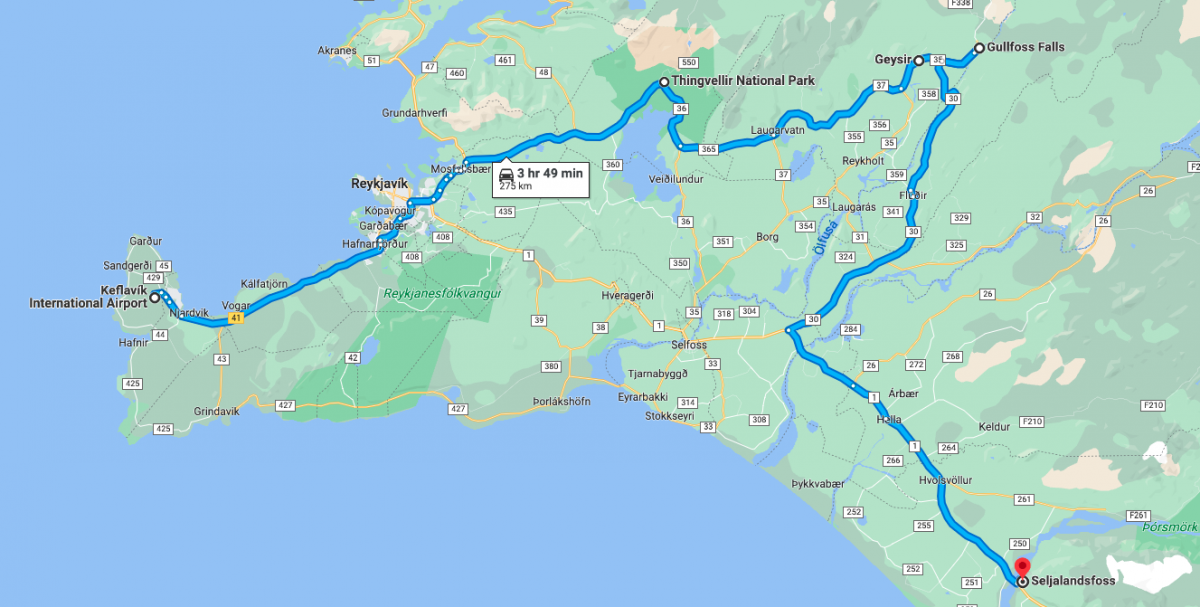
Arriving at Keflavik Airport, you’ll grab your car or camper van and make a quick stop at the nearest Bónus supermarket (known for being the cheapest in the country) to stock up on supplies. In the meantime, get ready for an exciting first day as you embark on the world-famous Golden Circle, a 300-km route that will lead you through the most breathtaking sights in the southwest of the island. It’s a classic staple in Iceland travel guide, and for good reason! Without further ado, your first destination along the route is the Thingvellir National Park, a true paradise of expansive lava fields and crystal-clear streams stretching as far as the eye can see, and a place that holds the honor of being among the three UNESCO World Heritage sites in the country. Moving east, you’ll encounter the Geysir Hot Spring Area, a place so remarkable that its name became synonymous with all geysers worldwide. Keep an eye out for Strokkur, a spring that erupts every 5 minutes, shooting hot water 30 meters high into the sky and filling the air with the strong scent of sulfur. Finally, the grand finale of the Golden Circle awaits you at the magnificent Gullfoss, a waterfall that unfolds into two different cascades, plunging into a majestic canyon carved by the Hvita River. It’s the perfect preview of the wonders yet to come!

First day wrap-up:
- Golden Circle
- Thingvellir National Park
- Geysir Hot Spring Area
- Gullfoss
Cheap restaurant suggestions around the Golden Circle:
- Súpa (Icelandic soups)
- Drumboddsstaðir (hamburgers)
- Pylsuvagninn (hot dog stand)
- Kaffi Krús (salads, pizzas, pastas and sandwiches)
- Héraðsskólinn Restaurant and Bistrô (varied)
Iceland 8-Day Travel Guide – Day 2: The South Coast

The next leg of our Iceland 8-day travel guide promises to be one of the busiest yet most rewarding days of your journey. After all, today you’ll be visiting the renowned South Coast, a region that, alongside the Golden Circle, showcases some of the country’s most breathtaking natural wonders. So, without wasting any time, we’ll kick off the day at Seljalandsfoss, arguably the most famous waterfall in all of Iceland and one of the very few where you can actually walk behind the cascading water curtain.
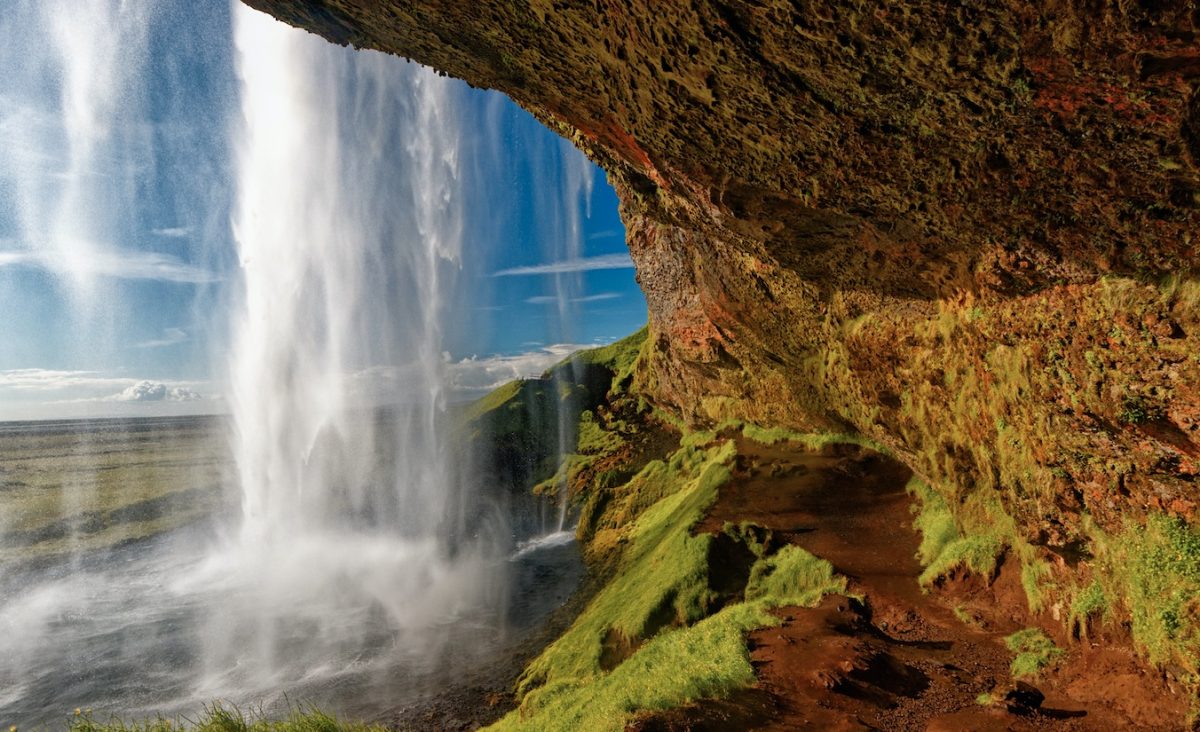
As you make your way there, don’t forget to steal a glance at Eyjafjallajökull, the glacial volcano that made headlines worldwide when it erupted back in 2010, grounding thousands of flights all over the continent. Next on our itinerary is Skogafoss, another iconic waterfall along the South Coast.

But the adventure doesn’t stop there. Prepare for a truly unique experience as we venture to the Solheimasandur area, where an abandoned plane rests in the vast, rugged landscape. In order to visit, you can either endure a two-hour round-trip hike or use the shuttle to reach the crash site.
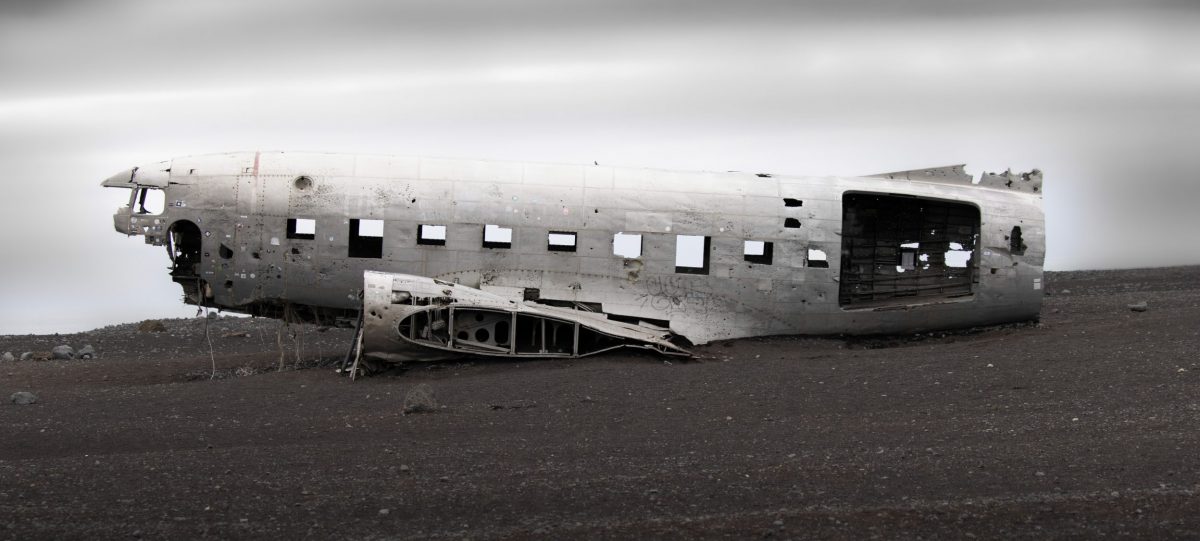
Continuing our journey and delving deeper into the array of landscapes the likes of which you’ve never seen before, we’ll make our way to Reynisfjara, a captivating black sand beach widely regarded as one of Iceland’s most picturesque.

Also located by the coast, don’t miss the magnificent Reynisdrangar, a group of towering basalt columns rising majestically from the sea. Before you wrap up the day’s adventures, make a pit stop in the town of Vik, where you can grab something to eat, before capping off your time in the South Coast with a visit to Svartifoss, your third waterfall of the day.
Second day wrap-up:
- South Coast
- Seljalandsfoss
- Eyjafjallajökull
- Skogafoss
- Abandoned Airplane
- Reynisfjara
- Reynisdrangar
- Vik
- Svartifoss
Cheap restaurant suggestions in Vik:
- The Soup Company (soups and paninis)
- Skool Beans (bakery and bagels)
- Smidjan Brugghus (hamburgers and sandwiches)
- Halldórskaffi (varied)
Iceland 8-Day Travel Guide – Day 3: Vatnajokull National Park and Jokulsárlón

Start your third day by exploring the Vatnajokull National Park, home to the largest ice cap in all of Europe. This remarkable park is not to be missed, and if you have the time and budget, I highly recommend taking a tour. We personally had an incredible experience doing a Glacier Hike in Skaftafell. If you’re visiting from mid-September onwards, you might also have the opportunity to do some Ice Caving, which is truly a spectacular activity.
Next on our itinerary is Jokulsárlón, an extraordinary glacial lagoon with icebergs of all shapes and sizes floating around. Along the way, don’t forget to make a delightful pit stop at Söluskálinn í Freysnesi, a roadside service station that surprisingly serves a mouthwatering lamb burger at an affordable price (you know, considering the Icelandic standards).
Just a short drive from there, you’ll arrive at Diamond Beach, aptly named for the glistening ice blocks that wash ashore, having drifted from the glacial lagoon. Before continuing your journey, I recommend making a quick visit to Hofn to savor a delicious meal, before heading towards Egilsstadir. By spending the night in this rather uneventful city, you won’t have to endure such a long drive to Husavik the following day.
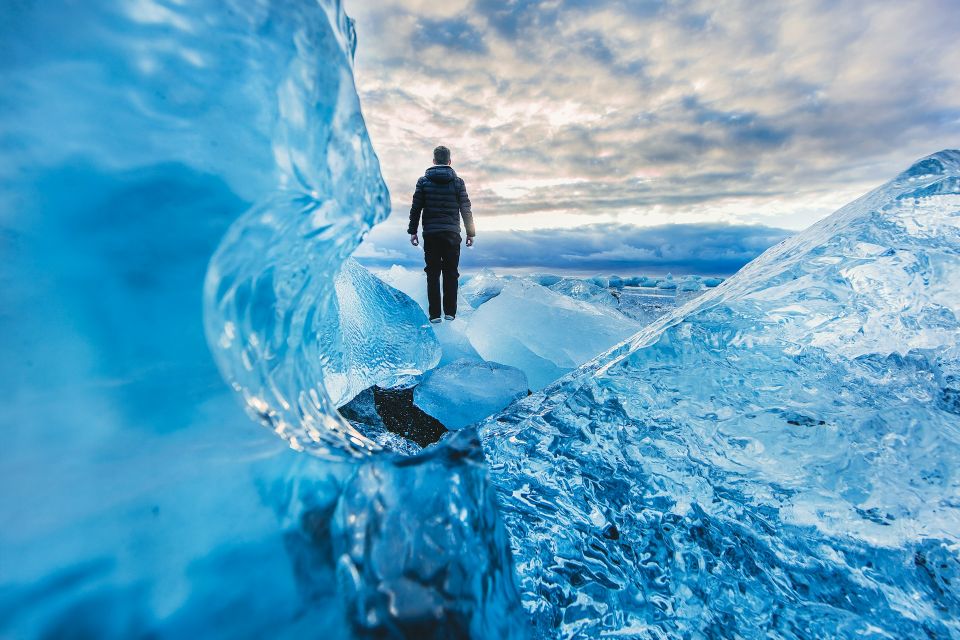
Third day wrap-up:
- Vatnajokull National Park
- Jokulsárlón Glacier
- Diamond Beach
Cheap restaurant suggestions in Hofn and Vatnajokull:
- Söluskálinn í Freysnesi (lamb burger)
- Hafnarbudin (American Diner)
- Hafid (noodles)
- Nailed It Fish And Chips (fish and chips)
- Ishusid Pizzeria (pizza)
- Kaffi Hornid (varied)
Iceland 8-Day Travel Guide – Day 4: Diamond Circle

Set off from Egilsstadir towards Dettifoss, the majestic waterfall that dominates the northern region of the country and stands as a true force of nature. This marks the beginning of the renowned “Diamond Circle,” the most famous route in this part of Iceland. After taking in the breathtaking waterfall, continue your journey to the extraordinary Asbyrgi Canyon. According to Old Norse mythology, this horseshoe canyon was formed when Odin’s horse set foot here, imprinting its shape onto the terrain. The views from the canyon rim are simply stunning, and you can admire the interior’s green and lush vegetation. In all honesty, and even though it is often overlooked in favor of the Golden Circle or the South Coast, this hidden gem is a must in any list of things to see and do in Iceland in 1 week.

In the afternoon, it’s time to wrap up the Diamond Circle with a detour to Husavik, where an incredible adventure awaits. While you can spot whales from various points across Iceland, Husavik is renowned as the “Whale-Watching Capital of Europe”, offering an unparalleled opportunity to encounter these magnificent creatures. During the summer months, you’re almost guaranteed to witness a diverse range of whale species and dolphins. Although it is perfectly possible to book a tour on the same day, we recommend doing some research on the best whale watching tours in Husavik and booking in advance.

Given your arrival time, it’s wise to save the whale watching tour for the following day and take the remainder of your time to unwind at Geosea. If you simply wish to soak in hot springs and prefer to skip the crowded Blue Lagoon (more on that later), Geosea is a fantastic alternative with other-worldly views.
Fourth day wrap-up:
- Dettifoss
- Asbyrgi Canyon
- Geosea (optional)
Cheap restaurant suggestions in Husavik:
- Fish & Chips (fish & chips)
- Heimabakari Konditori (bakery)
- Lemon Husavik (sandwiches)
Iceland 8-Day Travel Guide – Day 5: Whale-Watching in Husavik and Lake Myvatn
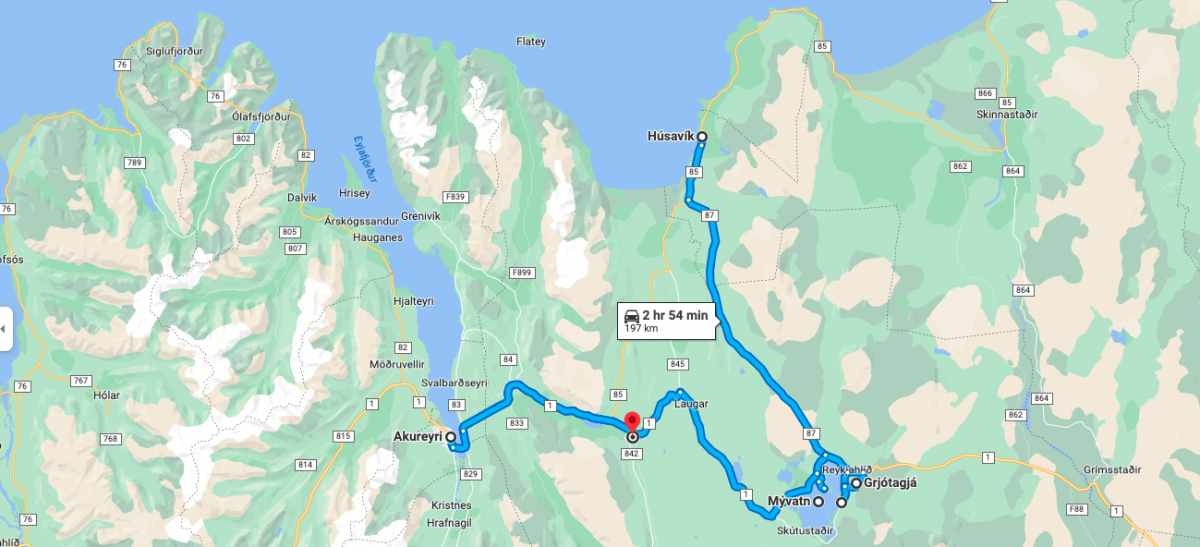
Once you’ve finished your whale-watching tour, it’s time to hit the road again and head towards the gigantic Lake Myvatn, where you can explore its shores and experience the area’s geothermal wonders. Once you make it to the lake’s surroundings, make a stop at Dimmuborgir, a vast lava field surrounded by endless formations of dark rock columns, creating an intriguing and impenetrable atmosphere that has earned it the nickname “The Black Fortress”. It really looks straight out of a movie! Within the field, don’t miss the chance to venture into the Grjótagjá Cave, a small volcanic grotto hiding a collection of hot thermal springs. While swimming is not allowed, the sight is something to behold. If you didn’t get a chance to hit Geosea, there’s another option for you to unwind in thermal waters, this time with a setting closely resembling the famous Blue Lagoon: the Natural Baths of Myvatn (43,00€).
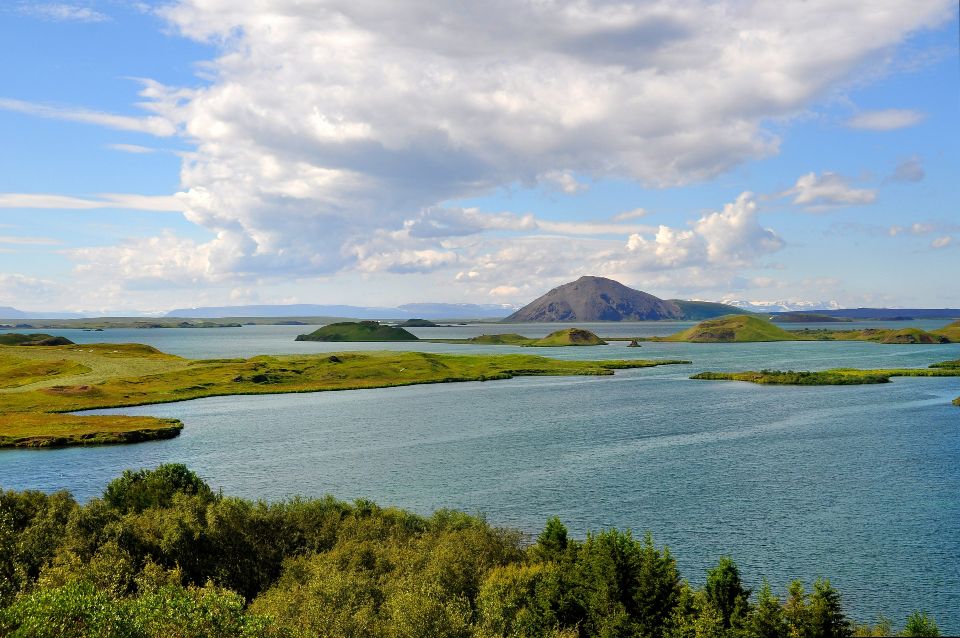
After exploring the wonders of Lake Myvatn, it’s time to start planning your journey to the Snæfellsnes Peninsula in the west of the country. However, before embarking on the long trip the following day, we recommend stopping at the city of Akureyri, where you should take some time to stock up on supplies and enjoy the charms of this northern gem. On your way there, take the opportunity to visit Godafoss, another magnificent waterfall to your enchanting collection of Icelandic cascades.
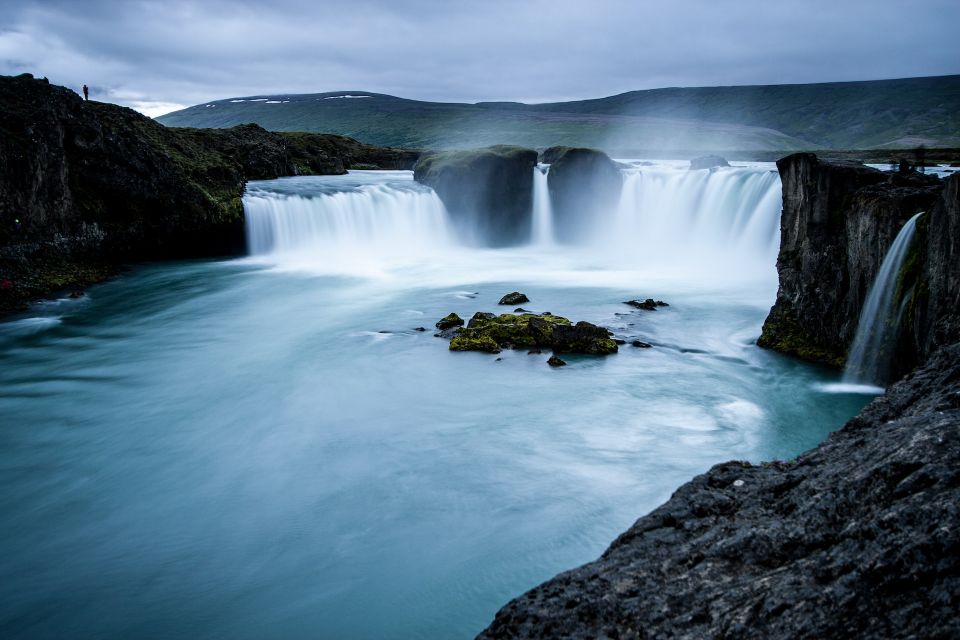
Fifth day wrap-up:
- Whale-Watching Tour
- Lake Myvatn
- Dimmuborgir
- Grjótagjá Cave
- Natural Baths of Myvatn (Optional)
- Godafoss
- Akureyri
Cheap restaurant suggestions in Akureyri:
- Lasagna and more (Italian)
- Kristjans Bakari Bakery and Café (bakery)
- Pylsuvagninn a Akureyri (hot dogs)
- Kurdo Kebab (shawarma)
- DJ Grill (hamburgers)
Iceland 8-Day Travel Guide – Day 6: Hvitserkur and the Snæfellsnes Peninsula

On your third-to-last day, you’ll simply relax and enjoy the scenery of northwest Iceland, taking a moment to stretch your legs and marvel at the famous Hvitserkur, a magnificent basalt rock formation standing at nearly 15 meters of height. Although it resembles a dragon sipping water, legend has it that this rock is actually a petrified troll.

After a few hours on the road, you’ll finally arrived in Snæfellsnes Peninsula. Just make a stop at Mount Kirkjufell, one of the country’s most photographed natural landmarks, and you can call it a day!

Sixth day wrap-up:
- Hvitserkur
- Snæfellsnes Peninsula
- Mount Kirkjufell
Cheap restaurant suggestions near Kirkjufell:
- Bjargarsteinn Mathús (traditional)
- Mæstro – Street food (street food)
- Græna kompaníið (Café / Snacks)
Iceland 8-Day Travel Guide – Day 7: Snæfellsnes Peninsula
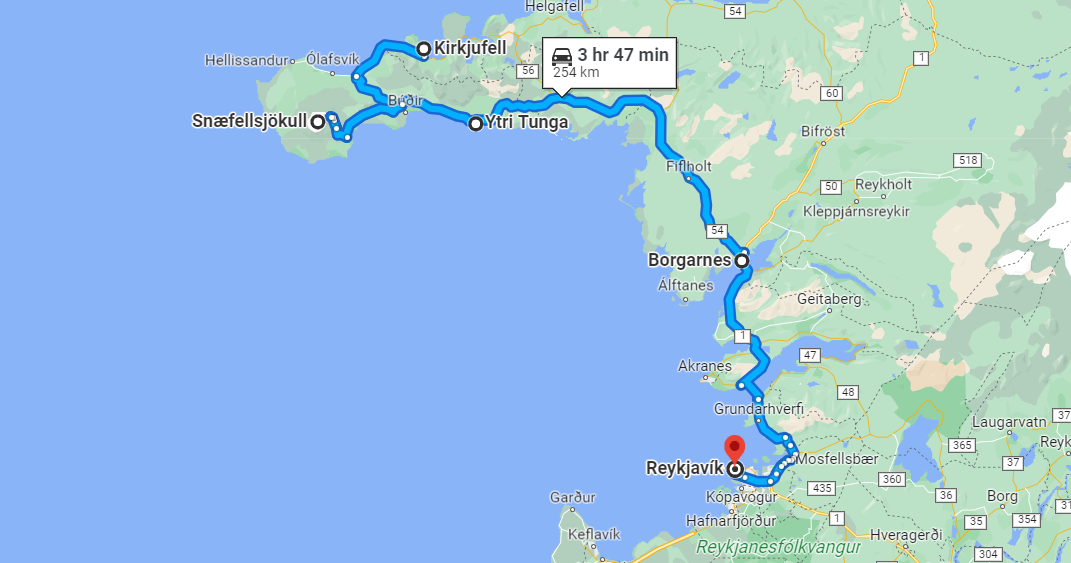
On your second day on the peninsula, make sure to soak in the breathtaking view of Snæfellsjökull Volcano‘s peak and capture some stunning photos of the seal colonies at Ytri Tunga Beach. Lastly, as you head back towards the capital, interrupt your journey at the charming fishing village of Borgarnes, nestled on the shores of Borgarfjörður. Take a breather, treat yourself to a (admittedly expensive) beer, and savor your final day on the road.
Seventh day wrap-up:
- Snæfellsjokull
- Ytri Tunga
- Borgarnes
Cheap restaurant suggestions in Borgarnes:
- Blomasetrid – Kaffi Kyrrd (quiches, sandwiches and paninis)
- La Colina Pizzeria (pizza)
- Hverinn (wraps and sandwiches)
Iceland 8-Day Travel Guide – Day 8: Reykjavik

We wrap up our Iceland 8-Day Travel Guide in Reykjavik, which, despite being the capital and main city of the country, boasts a population of just over 100.000 people. To delve into the captivating story of this remote and inhospitable land, I recommend starting your exploration with a visit to the Settlement Exhibition (2650 kr), a fascinating museum that will teach you about the accidental discovery of Iceland by Vikings from Scandinavia in the 9th century and showcase their remarkable ability to develop this apparently inhospitable territory. Follow it up with a leisurely stroll along the bustling harbor area and you’ll encounter the extraordinary Harpa concert hall, a true wonder of modern architecture. Also by the water, don’t forget to capture the classic snapshot of the Sun Voyager, the famous sculpture of a Viking boat which turned into a symbol of the Icelandic capital.

From here on, you’ll be officially entering Downtown Reykjavik. While the city may lack the traditional architecture of its European counterparts, its historic center brims with character. Wander along Regnbogagatan (affectionately known as Rainbow Street) and meander through Laugavegur, considered the two most vibrant thoroughfares in the area, before finally reaching the Reykjavik’s most famous landmark. Towering above the remaining cityscape, the Hallgrímskirkja is probably the country’s most famous building. Venture inside to experience its austere yet imposing interior, but make sure to ascend the church tower (1300 kr) for an unparalleled panoramic view of Reykjavik.

Last but not least, and if the Geosea and/or the Myvatn Hot Springs weren’t enough, make your way to the world-renowned Blue Lagoon (starting from 58,00€ – online reservation required). Located in close proximity to Keflavik Airport, this enchanting geothermal spa has gained international acclaim and frequently graces Instagram feeds around the globe. Totally understandable, as this is a particularly picturesque place… oh, and its 40ºC waters (even when it’s chilly outside) can’t hurt either! Don’t forget to pamper your skin with the rejuvenating mud, celebrated for its remarkable regenerative properties, before boarding your flying back home.
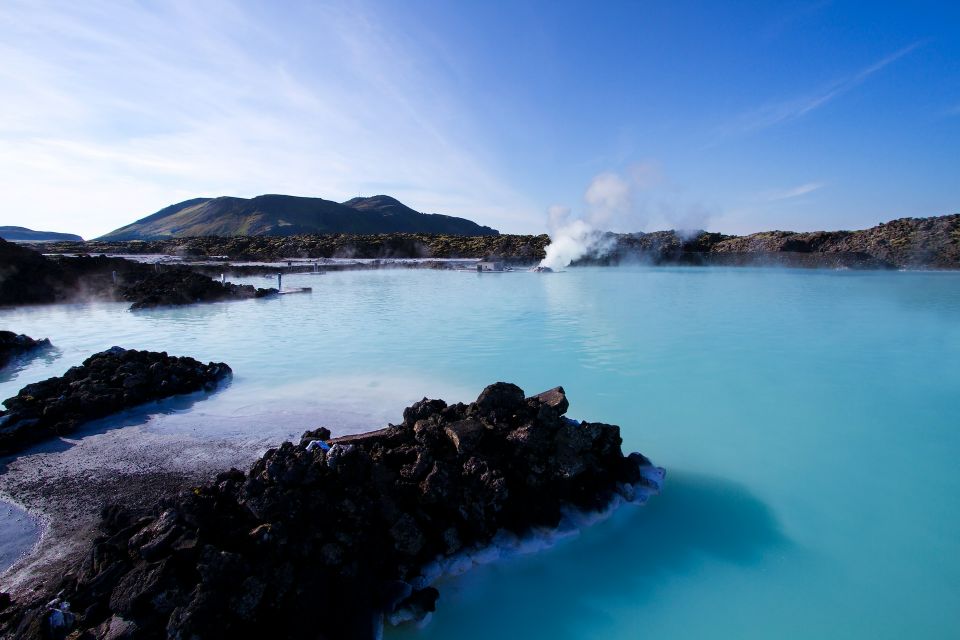
Eighth day wrap-up:
- Settlement Exhibition
- Harpa
- Sun Voyager
- Downtown
- Regnbogagatan
- Laugavegur
- Hallgrímskirkja
- Blue Lagoon
Cheap restaurant suggestions in Reykjavik:
- Icelandic Street Food (Icelandic traditional)
- Bæjarins Beztu Pylsur(hot dog)
- 101 Reykjavik Street Food (soups and noodles)
- Deig (bagels)
- Fish&Co (fish)
- Lamb Street Food (Lebanese)
Traveling soon? Get your Holafly eSIM with a 5% discount for unlimited internet access in any destination. No more worrying about roaming charges or finding local SIM cards. Enjoy unlimited data and stay connected with ease. Order your Holafly eSIM now »
Heymondo offers a wide range of travel assistance insurance policies. They combine the best quality, service and price with various levels of coverage, so you’re covered on your weekend getaways and long trips. Buy insurance »
Copyrighted 2024 by kamaviNET sp. z o.o. Please be aware that this article and whole website is copyrighted. No part of this publication may be reproduced, distributed, or transmitted in any form or by any means without the prior written permission of the publisher.




